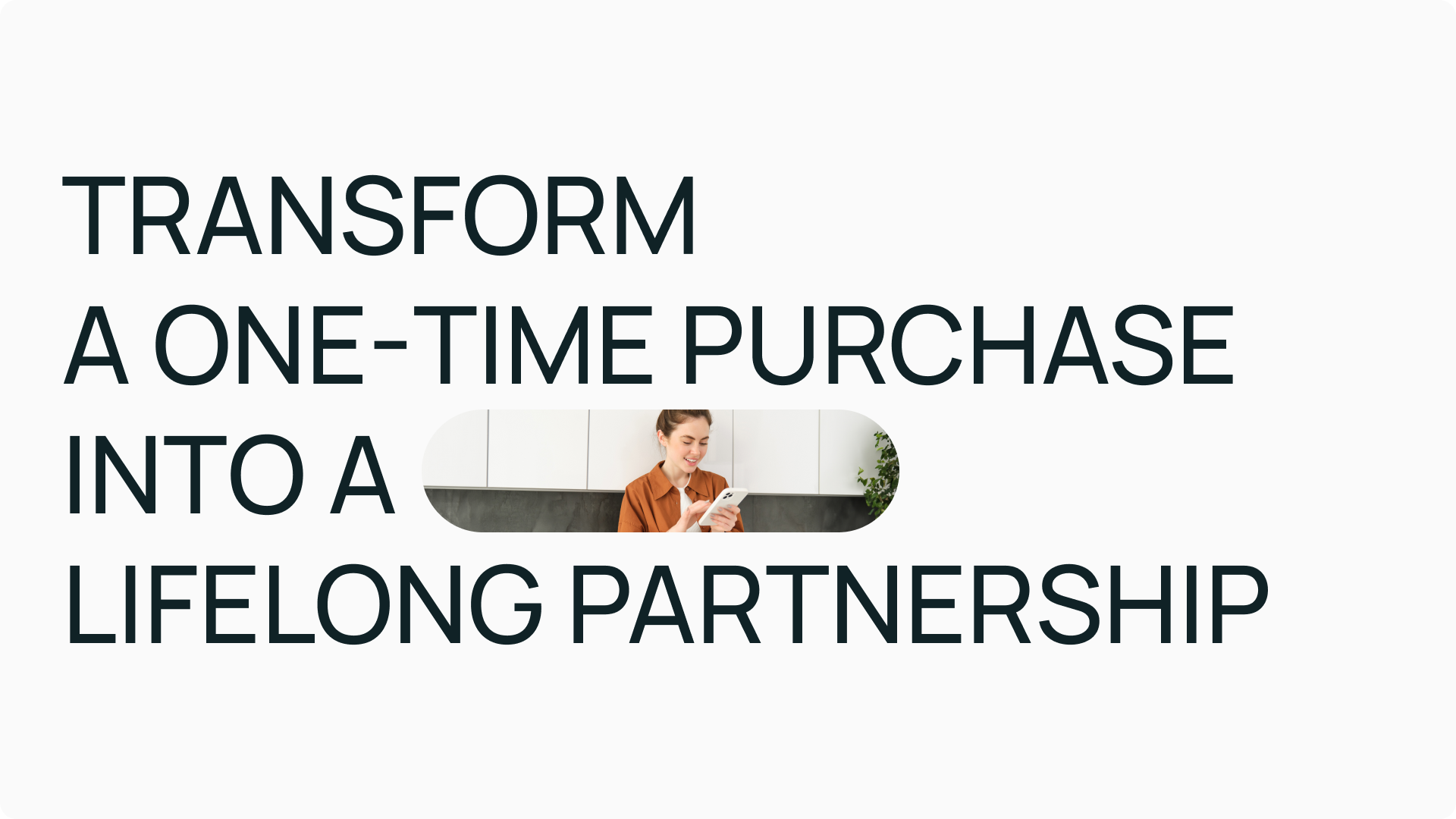From Purchase to Participation: Closing the Engagement Gap
From Purchase to Participation: Closing the Engagement Gap
Picture this: A customer eagerly signs up for a new online fitness program or enrolls in a language-learning subscription. The initial excitement runs high, the credit card is charged, and the confirmation email pops up in their inbox. But just a few weeks later, the user’s enthusiasm has cooled. They might have logged in once—or maybe twice. Soon, they’re questioning whether it was worth signing up in the first place, and before long, they’re ready to cancel.
This scenario is surprisingly common. Many businesses focus intently on making the sale but spend far less time ensuring that new customers actually become active, engaged users. The result is what we can call the “engagement gap”: a disconnect between the services people purchase and how regularly (and meaningfully) they use them. While new sign-ups indicate revenue potential, long-term growth demands more than just initial interest. Sustained engagement drives renewals, referrals, and a thriving brand reputation. The good news is that with some strategic approaches, it’s possible to bridge this gap and transform hesitant buyers into loyal, satisfied participants.
Understanding the Engagement Gap
1. Lack of a Clear Onboarding Process
Often, customers drop off right at the start because they don’t know what to do next. They sign up, log in—and are met with a confusing dashboard, multiple choices, and no guiding hand. Without a well-structured onboarding process that gently leads them through initial steps, users feel lost and are more likely to disengage.
2. Unclear User Journeys
Imagine buying a gym membership without a workout plan. Sure, you have access to the equipment, but without a roadmap—like which classes to try first or how often to visit—it’s easy to procrastinate. Similarly, in educational or wellness platforms, customers need clear pathways that guide them from newcomers to confident practitioners. If the platform doesn’t provide these “next steps,” the experience can feel aimless, leading to dwindling motivation.
3. Insufficient Motivation and Personalization
Simply purchasing an online yoga course doesn’t guarantee someone will roll out their mat daily. Many people need consistent nudges and reminders that they have the tools to succeed. Without ongoing encouragement, well-timed motivation, or relevance to their personal goals, they gradually lose interest. Whether it’s personalized progress reports or milestone celebrations, creating meaningful touchpoints keeps customers feeling valued and inspired.
4. Overly Complex or Inaccessible Content
Just as a new runner might give up if the first training session demands a marathon, new users can get overwhelmed if the early content is too advanced, too technical, or difficult to find. Content that’s hard to digest—or buried beneath too many clicks—stifles progress. When users don’t see a quick, attainable win, they’re less likely to return.
Strategies to Close the Gap
1. Map a Clear Onboarding Path
Start by imagining your user’s first session and highlight the critical steps they need to take. Perhaps it’s a short welcome video that points out key features, followed by a beginner-friendly lesson or workout. Offer tutorials, checklists, or guided tours. Think of onboarding as a gentle, friendly “walk-through” rather than a rushed orientation—something that leaves users confident, curious, and equipped to dive deeper.
2. Define User Journeys for Different Personas
Not all customers have the same goals. Some want quick wins; others aim for long-term mastery. Tailor user journeys to these segments. For example, a language platform might design one path for absolute beginners, focusing on foundational vocabulary, and another for intermediate learners eager to refine their conversation skills. When users see that the experience is built around their level and objectives, they’re more likely to stay engaged.
3. Integrate Regular Reminders and Motivations
Consider implementing strategic notifications—such as an encouraging email after a user completes their first lesson or a gentle reminder if they haven’t logged in for a week. Invite them back with compelling reasons: “Complete your next lesson to unlock a progress badge” or “Join tomorrow’s 15-minute yoga session to improve your flexibility.” Gamification elements—like badges, leaderboards, or streak counters—can foster a sense of accomplishment and motivate users to return frequently.
4. Offer Accessible, Bite-Sized Content
Break down complex material into manageable segments. Short videos, concise lessons, and structured progressions help users feel successful from the get-go. Remember that early positive experiences are crucial. When customers realize they can grasp and implement what they’ve learned quickly, they’ll be more confident in tackling advanced materials later.
5. Provide Continuous Support and Community
A supportive environment encourages ongoing participation. Offer Q&A forums, group coaching sessions, or access to a community of peers. When users know they can ask questions, learn from others, and celebrate milestones together, their motivation to stay involved increases. Make it easy to access help when they need it—be it through live chat, well-organized FAQs, or responsive support tickets.
Turning Customers into Lifelong Participants
Closing the engagement gap is about more than just preventing cancellations—it’s about nurturing enthusiastic advocates who credit your brand with positive progress in their lives. By incorporating thoughtful onboarding processes, clear user journeys, personalized motivators, and accessible content, you set the stage for lasting relationships with your customers. With each interactive session, encouraging notification, and supportive community interaction, you transform a simple purchase into an ongoing practice that drives measurable results.
Ultimately, when customers truly engage with your educational or wellness services, everyone wins. They gain the knowledge, skills, or vitality they sought; you gain their trust, loyalty, and long-term business. The steps to bridge the gap aren’t complicated—they just require empathy, foresight, and a commitment to making the user’s journey as fulfilling as the initial purchase promise.
